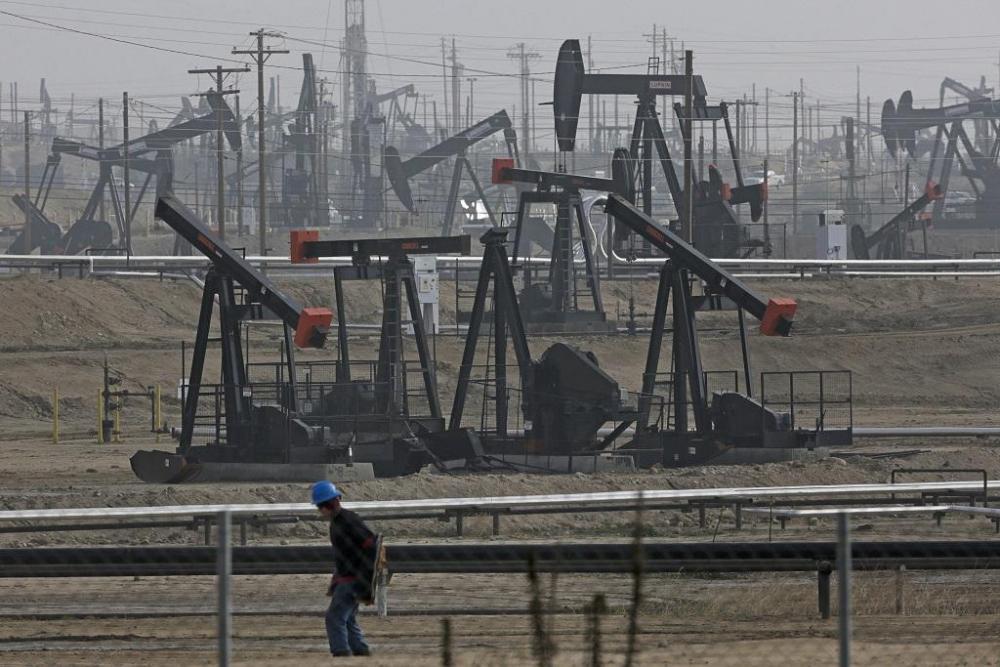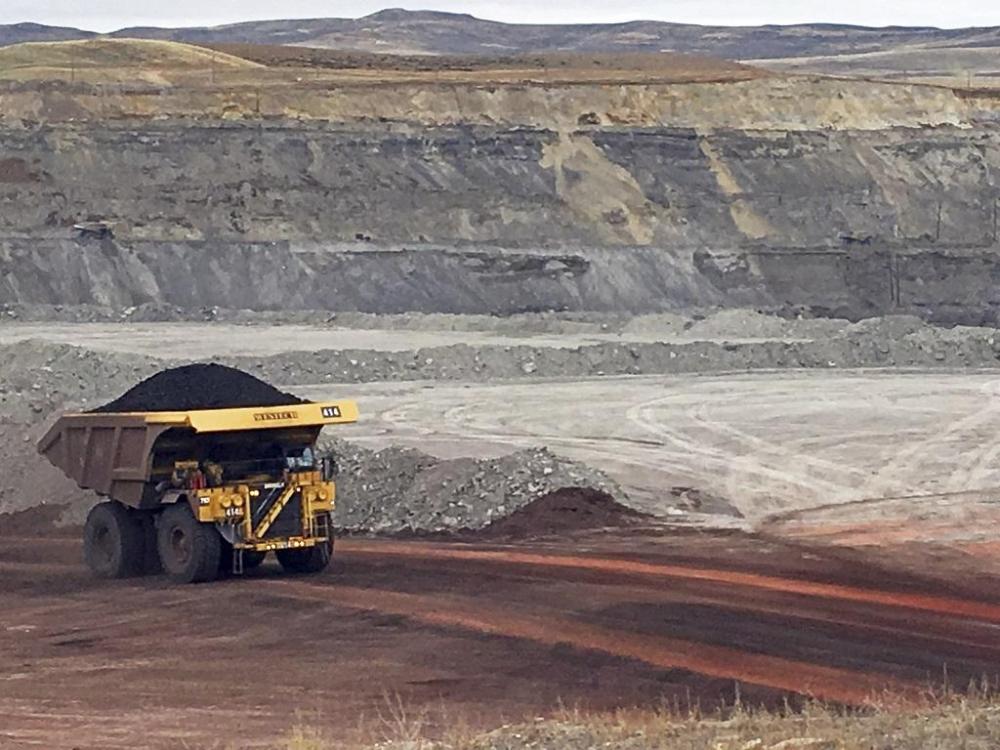This article appears in the September/October 2021 issue of The American Prospect magazine. Subscribe here.
On paper, Kevin McComber was not what you would call a typical insurance man. He had hard-science chops, holding physics and materials science and engineering degrees at the bachelor’s and doctorate level, all earned at the Massachusetts Institute of Technology, as well as technical private-sector experience. Out of MIT, McComber had decamped for Chandler, Arizona, where he worked in manufacturing, doing process engineering for Intel.
But after a few years in the desert, McComber wanted back in Boston, and he ended up applying for, and getting, a job at insurance giant Liberty Mutual, working out of the company’s flagship building on Berkeley Street. “I never pictured working in insurance, having done a hardcore engineering degree,” McComber told me, but the Special Projects team he ended up on wasn’t terribly unfamiliar. “The processing was actually similar to what I was doing at Intel.”
And yet, while the fit was fine, there was one thing that bothered him: the trash in the cafeteria. Every day at the end of lunch, the cans would be stuffed or overflowing with single-use Styrofoam packaging. He, along with a co-worker, reached out to human resources to see if a more sustainable alternative could be identified.
Leadership signaled enthusiasm, but their response was sluggish. After a while, McComber decided to formalize their effort, and created a group on the company’s internal social networking page called Sustainability@Liberty, to see if any other employees were interested. He couldn’t be the only one.
These things have a way of snowballing. After doing some research, McComber found that it wasn’t just cafeteria tableware where the company was lagging. At that point, Liberty Mutual was the only one of the top ten global property and casualty insurers that had not put out any public statement on sustainability. McComber made an infographic, showing Liberty compared to its big-budget peers—AXA, State Farm—and posted that in the group, which had grown large enough to get the formal attention of management, to whom McComber relayed his findings.
Outside of the fossil fuel industry itself, there may be no industry more tied to the climate crisis than the insurance industry.
Again, the company’s higher-ups seemed initially receptive to the group’s suggestions to enhance the company’s sustainability. And why wouldn’t they be? Liberty Mutual’s financial well-being was directly affected by the onrushing effects of climate change; 2017’s Hurricane Harvey, and its subsequent flooding in Texas, took a huge chunk out of their bottom line, and evaporated their annual bonuses. This was less a crusade than the scientific application of best business practices.
“I was never a tree hugger. I’m not, you know, funding Greenpeace or something,” said McComber. “I was just, like, a guy who was pissed off that we were using so much Styrofoam.”
The sustainability group got a board and bylaws, its membership breaking triple digits, and began pushing harder on the company’s policies beyond the four walls of its home office. McComber, now in a management consulting role, began meeting with people in the investments department to talk about fossil fuel assets Liberty Mutual held. He developed a communications strategy and conferred regularly with superiors. He joined an internal consulting group initiative, which he bemusedly described as a “pre-project project to look at whether Liberty should start a project to create a statement.” The focus changed from a “bring your own cup to work program” to “let’s talk about how we’re investing our shareholders’ and our policyholders’ money.”
It was at that point that the company’s tolerance wore thin, particularly after McComber began to learn about the firm’s immediate involvement in coal, oil, and gas projects. “There were some awkward conversations with my management about, you know, what I was saying in this group,” he told me. Eventually, the management discouraged him from posting in the sustainability group at all. Finally, he said, he was on the receiving end of “a very direct call with my manager’s manager saying if you continue doing this, I can no longer protect your job at Liberty Mutual.”
McComber only lasted a handful of months after that, exiting less than two years after founding the group. “I left not because of that, but it definitely helped the decision to leave,” he explained.
Not long after, at the end of 2019, Liberty appointed its first chief sustainability officer, and came out with its first environmental, social, and corporate governance (ESG) review. It pledged to no longer underwrite companies with more than 25 percent exposure to the extraction and/or production of energy from thermal coal; not to make new investments in debt or equity of companies that make more than 25 percent of their revenue from coal mining or utility companies that generate more than 25 percent of their electricity production from coal; and to phase out existing investments in violation of those standards by 2023. Meanwhile, Sustainability@Liberty, now called SEA, counts over 800 members and was officially recognized by the corporate sustainability office.
Those changes, insufficient though they may seem, were enough to move Liberty Mutual to 16th place among the top 30 international insurers of fossil fuel underwriting, and 12th in fossil fuel divestment, according to a 2020 environmental report card published by the activist group Insure Our Future. It put Liberty Mutual squarely in the middle of an industry that lags perilously behind on climate commitments, when its existence as an industry seemingly depends on minimizing the catastrophes caused by climate-fueled disasters.
Which begs the question: Why?
LET’S START WITH THE OBVIOUS: Climate change is causing bigger, more damaging, and crucially, more expensive storms. Every dollar we don’t spend on preemption, decarbonization, and preparation turns into multiple dollars in damage, remediation, and reconstruction. Thus, with every major storm, we have death tolls and damage estimates that daunt. This summer alone has seen record-shattering damage, one after another: from fires, floods, and hurricanes.
For insurers whose business is property damage and casualties, those aren’t just abstract numbers; they’re checks that they have to cut. For months, the business press has been full of headlines announcing huge, surpassing losses. “Insurers such as Allstate, Chubb and AIG could see significant losses from Hurricane Ida. Our early view is insured losses may surpass the roughly $10 billion of 2020’s Hurricane Laura and could approach $30 billion,” reads one Bloomberg story. “The floods last month in central Europe caused about 6.5 billion euros ($7.6 billion) of damage,” reads another.
That’s not headline froth. From 2000 to 2009, insurance payouts for climate change–related weather events averaged $19 billion annually. From 2010 to 2019, it was over 50 percent higher, $31 billion, according to Grist. Last year more than doubled that, with insurers paying out $60 billion in 2020 in the U.S. alone.
Swiss Reinsurance, the world’s second-largest reinsurer (which insures the insurance industry, covering the most catastrophic losses), found that last year was the fifth-costliest for the industry in five decades, with global losses amounting to $83 billion, driven by a record number of severe storms and wildfires in the U.S. This year is setting up to be even worse, as those natural disasters have only continued.
But insurers are not as helpless as flood victims in the Louisiana bayou. They control vast sums of money, and lobby shops to boot. Nearly every major construction and development project on the globe, home prices, a nontrivial chunk of the stock market, and various other things are at their mercy.
One would think, then, that the insurance industry would be among the most forceful advocates for large-scale intervention on climate change, based on, if nothing else, that good old market homily that is self-interest. The losses keep mounting in the absence of aggressive measures. Either the federal government, in tandem with private investment, pays for a major decarbonization program, or the insurance companies pay for the cleanup. That shouldn’t be a tough decision for a bunch of fund managers to make.
Furthermore, because of their clout and institutional power, one would also assume that if insurers put their mind to it, they could be unusually effective advocates for a green transition. Just about the only time anything gets done in Washington is in those rare moments when a corporation or industry decides they want it to happen. That could be the legacy of insurance companies and climate change.
And yet insurers have not been terribly vocal about the climate crisis. In fact, they’ve been highly resistant to even small-bore climate solutions, instead opting for tepid statements about environmental sustainability.

McComber’s crusade for sustainability in the insurance industry began with too much Styrofoam in the Liberty Mutual cafeteria.
At the same time, outside of the fossil fuel industry itself, there may be no industry more actively and intimately tied to the climate crisis than the insurance industry. “Insurance companies are a crucial but really misunderstood piece of the fossil fuel production ecosystem. You can’t have a coal mine or oil pipeline or anything,” said Yevgeny Shrago, policy counsel for Public Citizen’s Climate Program.
But by loading up on stocks of oil and gas companies and energy utilities, purchasing corporate debt of coal and other fossil fuel firms, and underwriting the development of new infrastructure like pipelines and plants, much of which is being done at record rates, the insurance industry is currently propping up the industry that is expediting its own demise. Insurance companies are financially vulnerable to the ravages of climate change, but they also happen to be profiting off of its acceleration.
PARTLY, THIS IS A FUNCTION of the expansive nature of an insurance company. The biggest ones insure, invest, underwrite, reinsure, and lobby; they have policyholders, investors, and investment holdings. What’s more, they’re in the business of risk: If the increased riskiness of new fossil fuel production makes it a riskier investment, that pays a higher return, as long as it doesn’t go bust.
No human better embodies the strange and contradictory organization of an insurance giant, or its potential as a cash cow, than Warren Buffett. His conglomerate Berkshire Hathaway, which was built out of his initial insurance holdings, is simultaneously the second-largest property and casualty insurer in the country, an auto insurer (through Geico, which it owns), and a reinsurer. But Berkshire Hathaway is also a massive institutional investor, seller of climate-vulnerable residential real estate, controller of multiple private-sector utility companies, owner of BNSF (the largest coal-transporting railway in the country), shareholder of Chevron, underwriter of oil and gas projects, and source of the fortune of America’s most avuncular billionaire.
How did one of the nation’s most massive fortunes spring from the relatively drab field of insurance? It boils down, in essence, to this: Insurance companies take in money as premiums (called “float”) and invest it, with the hope that they make more money on the investments than they have to pay out in claims. All the insurance premiums you’ve paid in your life, multiplied by hundreds of millions of Americans, across multiple decades, sum to trillions of dollars in total, all governed by the simple inequality that the profit on the investment must exceed the claim damage, sometimes by enough to make a certain Nebraska businessman unspeakably rich. This is our society’s major risk management apparatus.
Investment teams at insurance companies certainly have the option of channeling float away from carbon-reliant investments. Seeing whether they are making that choice, though, is easier said than done. “The biggest insurance companies have no real federal oversight whatsoever. They’re very, very hard to see,” said Shrago. Indeed, insurers are one of the only major financial entities not meaningfully regulated at the federal level. At best, by cobbling together SEC filings, state-level regulatory reports from climate-committed states like California and New York, and major industry research projects, “we know about 70 percent of the market, how they’re invested,” Shrago explained.
But that 70 percent paints a grim picture. Take, as an example, Allstate, the fourth-largest American property and casualty insurer by premiums as of 2019. Because Allstate is publicly traded (not all major insurers are), it’s forced to regularly file its investment holdings with the SEC in the form of 13-F disclosures, one of the few federally mandated windows into the company’s activity. According to the most recent report in August, Allstate holds 34,642 shares of Chevron, 70,157 shares of ExxonMobil, 13,236 shares of Marathon Petroleum, 12,989 shares of ConocoPhillips, 21,133 shares of Occidental Petroleum, 6,300 shares of Whiting Petroleum, and 5,087 shares of Valero. It maintains holdings in Duke Energy, Dominion Energy, and Diamondback Energy, and that’s just the letter D. The full list would overwhelm this article.
But 13-F filings only cover stocks and equities. They don’t catalogue holdings in debt, which can be even more troubling. The New York State Department of Financial Services 2 Degrees Investing report, published in June, gives perhaps the most exhaustive review of the state’s insurers, many of which are also major national insurers, based on their holdings in both debt and equities. With this report, we can see not only that the investment mix in the Allstate portfolio is common industrywide, but that insurance companies are actually even heavier into fossil fuels than other investment sectors. They fare worse than the broader market average and worse than large institutional investors, which can hardly be said to be an exceptionally progressive force. While similarly large groups like banks, university endowments, and asset managers have shown a willingness to exit coal entirely, and wean off oil and gas, insurance companies have shown no such propensity, holding not only stocks of oil and gas but debt and bonds even of coal companies.
“The five-year forward-looking capital plans of most insurers’ investee companies in these sectors were not Paris-aligned,” the report notes, referring to the Paris climate accord’s thresholds, which are widely known to be insufficient. “In many cases, insurers’ portfolios were less Paris-aligned than market benchmarks.” The report estimated that about 11 percent of insurance company holdings in equities and fixed-income assets were in carbon-intensive sectors; for equities and corporate bonds, the number was 17.2 percent. It was even larger for life insurers, whose corporate bond exposure to these sectors was a stunning 20 percent; some firms were as high as 30 percent or more.
“Insurers were overinvested in coal and oil-fired power generation and underinvested in renewables,” the report continues, while “the size of coal-fired power generation relative to other forms of power generation was too large to be Paris-aligned.” While coal has broadly fallen out of market favor nearly everywhere, with insurers, it holds on.

JAE C. HONG/AP PHOTO
How is that possible? Shrago postulated that it was yet another example of insurer appetite for risk. “Fossil fuels are risky, [and] risky assets give better returns when they don’t fail,” he told me. It’s a perverse cycle: As payouts after natural disasters increase, insurers need higher returns on their investments to make up the difference, so they turn to the sector that is driving the higher frequency of natural disasters. “Insurers are heavily basically gambling on the better returns,” Shrago said. “And of course, when fossil fuels inevitably collapse, as a result of the coming clean-energy transition, they’re gonna be screwed.”
But it’s already known to be a losing gamble. According to a report from the investment bank Société Générale, there’s a big financial premium to not investing in coal; indeed, insurance companies that have withdrawn from coal do better. Similarly, withdrawing from oil and gas often pays what’s called a “green valuation premium.”
According to a workup by the investing service S&P Global published at the end of August, American insurer holdings in poorly performing oil and gas companies remain at record rates. At the end of 2019, “the U.S. insurance industry had $582 billion invested in some combination of oil, gas, coal, utilities and other fossil fuel-related activities,” an increase over the $519 billion held the year prior. That number was higher still than the $459 billion in 2014, indicating a steady upward trajectory despite years of accelerating climate-fueled catastrophes and miserable returns.
The extreme downside of the bet, the potential collapse of carbon-sensitive assets, has already begun. “Fossil fuel investments … they’re awful from a client perspective, just from a fiduciary perspective,” said Steven Rothstein, managing director of Ceres Accelerator for Sustainable Capital Markets, a nonprofit focused on environmental issues and capital markets. “In 2020, the oil companies wrote off $145 billion of assets. That’s pipes and flanges and pipelines and things like that, that they couldn’t recover.” Despite the fact that the Federal Reserve used lending programs established under the 2020 CARES Act to direct massive financial support to bail out flailing oil and gas companies, the sector still saw a significant number of firms go under. As those supports fall away and as governments continue to pass laws supporting a green transition, the market will look even worse.
If investing is murky, the underwriting aspect of the insurance industry is fully opaque. Building fossil fuel infrastructure projects is incredibly expensive and risky, something that gets more capital-intensive as coastal installations—plants, pipelines, etc.—get bludgeoned by storms, flooding, and rising sea levels. It’s here, on what’s referred to as the “product side,” that the insurance industry is uniquely powerful. If they chose not to insure these projects, they simply wouldn’t exist, while any existing project would have to cease operations if its insurance got pulled. That includes all of the most controversial extraction sites: tar sands, Arctic drilling, shale oil, offshore and deep-sea exploration.
If the increased riskiness of new fossil fuel production makes it a riskier investment, that pays a higher return, as long as it doesn’t go bust.
“On the underwriting side, one has only to look at both regional and global losses that are driven by catastrophic weather events that in turn are being driven by climate change to understand the enormity of the exposure that insurers have,” said Dave Jones, former California insurance commissioner, in a June 16 address for S&P Global.
Meanwhile, the insurance premiums they’re bringing in from insuring new projects are triflingly small, nowhere near enough to offset the mounting costs of climate change. Premiums from insuring new oil and gas projects amounted to $1.7 billion in 2018, which equals just one-tenth of 1 percent of all property and casualty premiums. Sustainable investing and rational, market-based solutions have long been preached as an asset in the climate fight—and yet: There is no financial incentive, short-, medium-, or long-term, that can explain the industry’s enduring and exceptional commitment to fossil fuel. In this most essential industry, the profit-seeking mechanism seems to be broken.
WHY INSURERS REMAIN SO LOYAL to fossil fuel companies in the face of gale-force economic headwinds can only be hypothesized. The problem is the result of a handful of factors: financial, regulatory, and cultural.
The annual time scale on which financial years are assessed and bonuses are paid out discourages long-term planning; the backward-looking risk forecasting model is predicated on a world that isn’t our current one. More important, executives at insurance companies rely on the continued burning of carbon for their livelihoods.
“Their relationship managers have good relationships with their fossil fuel companies,” said Shrago. “Their individual bonuses depend on continuing that business.” Elana Sulakshana, a campaigner with the Rainforest Action Network, added that the risk specialists who might be disinclined to continue working with the fossil fuel sector aren’t as high on the totem pole within insurance companies as the executives who are intertwined with the industry.
Meanwhile, regulation of the insurance industry is left to the states, which means that there isn’t an overarching national authority to compel transparency, action, or a change in behavior. Some insurance commissioners around the country, like Jones, have been focused on the climate issue, but others, particularly in oil and gas extraction states, are more captured.

MEAD GRUVER/AP PHOTO
Insurers remain overinvested in oil and coal companies and underinvested in renewables.
Finally, there’s good old-fashioned culture war. Insurance companies are afraid of backlash or retribution for severing ties with fossil fuel companies, many of which are staffed by friends and colleagues. After the 2016 elections, according to McComber, Liberty Mutual “was worried about getting Trump tweeted, about Trump saying something bad about Liberty. At the time, they had a pretty strong presence with conservatives, they advertised on Fox News.”
Sen. Sheldon Whitehouse (D-RI), one of the more vocal climate hawks in Congress, concurred with this viewpoint. “The other thing that I’ve heard repeatedly from companies and trade associations is that the fossil fuel industry has its claws into the Republican Party in Congress so deeply that other trade associations fear repercussions,” Whitehouse told me in an interview. “The fossil fuel industry will tell Republican operatives in the House or in the Senate to punish the industry that crosses them.”
All that has resulted in an industry in the U.S. that lags far behind comparable industries on its climate commitments, and far behind its European and Canadian counterparts as well. Despite all the sustainability pledges and corporate press releases, the financial activity of the industry shows an industry uniquely in denial about climate change, and uniquely exposed to its ravages. What is the way out?
While divestment has been a popular talking point among activists for decades, its track record is, to put it generously, mixed. And while insurers have major financial holdings, their power in the equities markets is actually dwarfed by their influence elsewhere.
Underwriting isn’t where the bulk of the money goes, but it is where insurers wield the most power. And on certain projects, they’ve shown willingness to use it. According to a report from the activist group Unfriend Coal (now called Insure Our Future), the number of insurance companies withdrawing coverage for the coal sector doubled in 2019, with 37 percent of the industry’s global assets in coal now earmarked for future divestment, and about 46 percent of the reinsurance market on the same trajectory. Accordingly, coal companies have seen rate increases of nearly 40 percent, making new and old projects even less attractive and financially viable.

TOM WILLIAMS/AP PHOTO
Sen. Sheldon Whitehouse (D-RI) is one of the more vocal climate hawks in Congress.
European insurers far outpace their American counterparts on the strength of these commitments, though. Swiss Re and Zurich Insurance Group have made the most robust pledges to refuse insurance for new mines and power plants; France’s AXA has pledged a complete exit of coal insurance within the EU by 2030, and the world by 2040. Swiss Re also signed a ten-year, $10 million deal with a startup working on technology to capture carbon dioxide and inject it underground, part of its pledge to hit net-zero emissions by 2030.
All told, some 23 major companies in Europe have moved to break with coal. Meanwhile, in America, AIG is still without a coal policy (something that caused Legal & General Investment Management, one of Europe’s largest asset managers, to pull its investments from AIG in June).
Furthermore, that movement on coal has not been mirrored in the oil and gas sector, where insurers remain stubbornly committed to underwriting projects. Just one major firm—Australia’s Suncorp—has pledged to take “significant action” in no longer underwriting any new oil and gas projects, according to an analysis from Société Générale. Part of this can be explained in dollars and cents. Premiums for oil and gas projects summed to over $17 billion in 2018, compared to just $6 billion for coal. Though neither is an especially substantial figure, oil and gas is a significantly larger part of the insurance business.
The oil and gas side of the insurance market is also highly concentrated. Just a handful of firms dominate the space, including American companies AIG and Travelers, and the European Zurich Insurance Group. Ten companies account for about 70 percent of total underwriting, according to research done by the environmental coalition Insure Our Future.
That’s why, in recent years, activists have trained the bulk of their energies toward ending the underwriting of oil and gas. But in the underregulated American market, companies are not required to disclose any information on underwriting projects, which makes it nearly impossible to figure out who’s behind new pipelines, fracking installations, and processing plants, even in the case of controversial, headline-grabbing projects like the Line 3 pipeline in Minnesota.
Activists have trained the bulk of their energies toward ending the insurance underwriting of oil and gas.
But that’s not the case in Canada, where the Trans Mountain Pipeline, a tar sands pipeline that will carry oil from Alberta to Vancouver, is receiving major opposition from activists. “Due to Canadian regulation, they have to file their insurance [provider],” said Sulakshana, of the Rainforest Action Network. “With the information of who’s insuring the company, we’ve been able to launch a campaign pressuring those insurers and other potential insurers to not cover the project.”
So far, that pressure campaign has found some traction, with 15 insurance companies in Canada ruling out involvement with Trans Mountain. The other place this tactic has proven successful is in Australia, with the Carmichael Coal Mine, once referred to by Rolling Stone as “the world’s most insane energy project,” an open-pit thermal coal mine expected to produce ten million tons of coal annually. Activists both locally and worldwide have pushed to prevent the project from going live. Targeting insurers has proven the most effective route.
“There we now have more than 40 insurance companies and brokers that said they won’t get involved with the project,” said Sulakshana. One of the mine’s contractors recently revealed that they “have not been able to secure adequate insurance coverage for construction of the mine. Its policies are set to expire soon, and it may not be able to move forward because it doesn’t have insurance.”
Even if pulling out of fossil fuel investments, or refusing to insure fossil fuel projects, were impossible, there is one more forum in which insurers could enact meaningful environmental changes that would benefit the planet and, coincidentally, their own bottom line: lobbying. The industry is a force in Washington, D.C. “You’ve got the American Insurance Association, got the Property Casualty Insurance Association, the reinsurers have their own association, they’ve got several trade associations. And none of them are activated on any serious climate legislation,” said Sen. Whitehouse.
As the 2008 mortgage crisis showed, a misaligned insurance industry is not just the concern of the sector’s CEOs and shareholders; it’s everyone’s. Their steadfast refusal to react to the realities of climate change at a reasonable scale leaves them vulnerable to any number of existential shocks, like the devaluation of fossil fuel holdings or the collapse of coastal property values due to sea level rise. These problems cannot be remedied by merely raising rates or denying coverage. And as climate change worsens, the past becomes a weaker and weaker predictor of the future, which makes the very act of insuring more difficult.
“God knows, there’s a certain satisfaction in watching people who have done something extremely stupid pay the price,” said Sen. Whitehouse. “The problem is the price the insurance industry will pay for its fecklessness is one that we will be obliged to pay as well.”
Alexander Sammon is a staff writer at The American Prospect.
Fortify your mind! Join the Prospect today
Support The American Prospect's independent, nonprofit journalism by becoming a member today. You will stay engaged with the best and brightest political and public policy reporting and analyses, and help keep this website free from paywalls and open for all to read. Our membership levels offer a range of perks including an opt-in to receive the print magazine by mail.


Spread the word